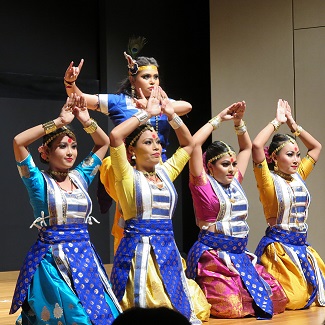Dance is an art, paint your dreams and follow it- Steven Thompson
Bihu Dance
Bihu is a popular folk dance associated with the state of Assam in India and it is performed generally during the Bihu festival. Bihu indicates a humble acceptance of the impact of changing season in the life of the Assamese people and yet is an enthusiastic response to them. Thus following the major seasonal effects upon the life of the people as obvious in the agro based economy of the society in the ecological zone where Assam is situated Bihu corollary has three seasonal versions, namely, the Bohag bihu that mark the new years at the advent of seeding time. The Kati Bihu that mark the completion of sowing the transplanting of paddies, and the Maagh Bihu that mark the end of harvesting period.
Besides the seasonal significances of the terminologies as mentioned above three is the parallel terming of each of the Bihu highlighting another dimension of the chrematistics features of each of the bihu. Bohag bihu is also called the Rangali Bihu to imply the festival of merriment, maagh bihu as the Bhogali bihu on the festival of food; kaati bihu is also called Kongali Bihu as the festival of the poor.
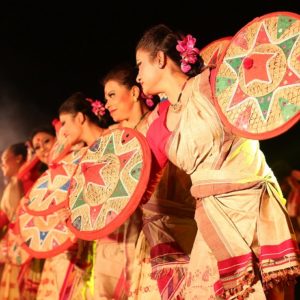
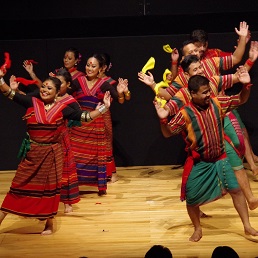
Hajong Dance
The Hajong belong to the Indo-Tibetan group. They are the fourth majority tribe in Meghalaya. Hajong are found in both the Garo and Khasi Hills of Meghalaya.They are largely belong to Khasi Hills of Meghalaya, and also belongs from Bangladesh border. They also live in the Dhubri and Goalpara District of lower Assam, Dhemaji and other districts of upper Assam and into Arunachal Pradesh.
Hajong women can be easily indentified by their brightly striped red dress called a Pathins & “Phula Agon”. Traditional, and in many present day villages, women are accomplish weavers who make their own Pathin, Phula Kompes, Gamsa and their household’s clothing.
Tai-ahom Dance
Tai Ahom is one of six western Taigroups who migrated from near present day Yunnan in early 13th century under the leadership of Sukapha, a Tai prince. The Ahom are the descendants of the ethnic Tai people who accompanied a Tai Prince, Sukaphaa, in his migration from what in now the frontier regions between Myanmar and Yunnan province in the southwest China into the Bramaputra Valley in followers established the Ahom Kingdom (1228-1826), which controlled the Brahmaputra Valley and the territory of modern Assam until the British Gained control of the region through the Treaty of Yandabo after their 1826 victory in the first Anglo-Burmese War. In the early days of the Ahom Kingdom, although the Ahom made up a relatively small portion of the Kingdoms population, they maintained their original Tai language and practiced their traditional religion. Over time however, the kingdom adopted the dominant local language, Assamese, and the royal court eventually converted to the dominant local religion, Hinduism.
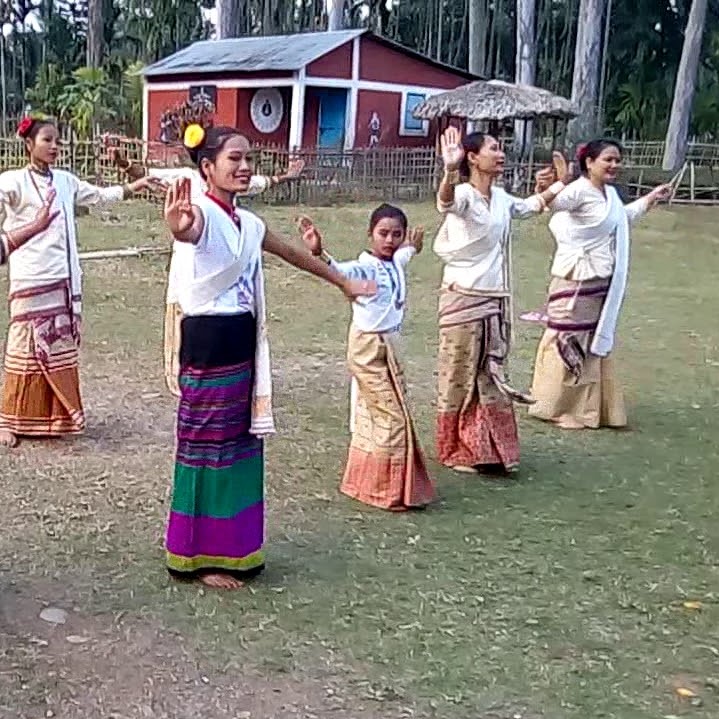
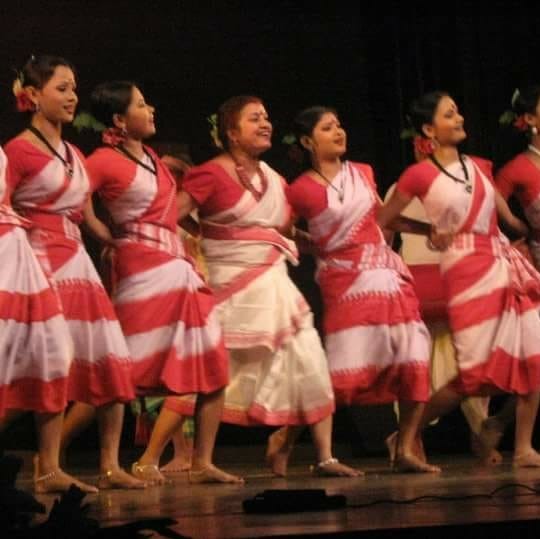
Jhumur Dance
Jhumur Dance is usually performed during Autumn season in Assam. A major portion of Assamese population is covered by the tea labourer Group of people. In case of Language concern they adopted Assamese and adopted to Assamese language, as speak broken Assamese but they have their own dialect. They were migrated by the Britishers to war time they have lost their identity and accepted in Assam as their motherland, later on recognized as on old and a major tribe in Assam. Thus along with their own custom and creed they mingled in the trend of Assamese culture and tradition. As mention earlier Karampuja is their soul like, the source of all merriment, the main spirit of living, as they enjoy a lot by dancing and singing along with Madal, flute and pair of ‘taal’ The dance form is popularly known as Jhumur.
Tiwa Dance
Tiwa indigenous community inhabiting the states of Assam and Meghalaya and also found in some part of Arunachal Pradesh and Manipur in North-east India. They are recognized as a Scheduled tribe within the State of Assam. They were known as Lalungs in the Assamese Buranjis, Colonial literature and in the Constitution of India, though members of the group prefer to call themselves Tiwa. A striking peculiarity of the Tiwa is their division into two sub-groups, Hill Tiwa and plains Tiwas, displaying contrasting cultural features. Popular dances of tiwas are Borot & Lngkhung dance etc.
The Tiwas are originate from the Patorgoyan clan of the Chutiyas. The word “Chutiya” became “Tiya/Tiwa” by omitting the first part “Chu”. The Patorgoyan clan is no more found among Chutia, and are believed to have migrated to the west. The Ahoms upon their arrival in Assam also called the Chutiyas as “Tiura”. Dalton has also remarked that the tribe called “Tiwa” are of the same family and the “Lalungs” of Upper Assam claim to be of Chutiya descent.
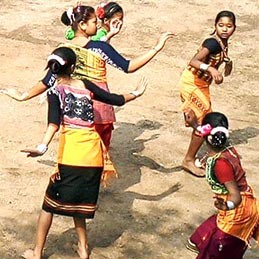
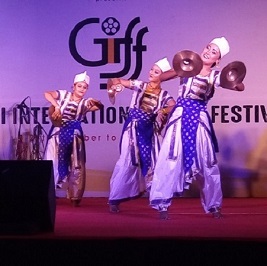
Bhortal Dance
Barpeta’s Bhortal Nritya is one of the most popular dances performed in the Assam state of India. People who belong to all age group and cultural background enjoy this dance. Generally, it is performed during the festival season like Bihu and is staged in and around the district of Barpeta. This dance reflects the rich cultural heritage of the Indian state of Assam.
This traditional dance is said to have extended from the Sankari culture. The dance is known to have developed by a well-known Satriya artist named Narahari Burha Bbakat. It has its origins in classical arts. This dance is performed in a group. Six or seven dancers generally present the Bhortal dance of Assam together. This dance can be performed in larger groups as well. It is performed to a very fast beat. This beat is known as ‘ 7hiya Nom’. The dance movements are designed as such that they can produce some very colorful patters. This is the uniqueness of this dance from of Assam.
Bodo Dance
Bodo Dance is a native folk dance of Bodo People. The word ‘Bodo has been derived from the word ‘Bod’ which mean Tibet, They speaks the Bodo language.
The most intriguing part of Assam culture is that there are different dance and music forms for every festival. One such dance form is Bagurumba, which is performed by the Bodo tribe to mark the Bwisagu festival with their colorful dokhna, jwmgra (fasra) and aronai. Dance is incomplete without music, and so is in the case of Bagurumba festival, which is accompanied by the instruments like kham (a long drum, made of wood and goatskin or other animal’s skin), sifung (flute, made of bamboo), jota (made of iron/Tama), serja (a bowed instrument, made of wood and animals skin), and gongwna (made of bamboo), tharkha (a piece of split bamboo). The music has many elements of nature involved like dance of plants, the dance of animals, birds, butterfly dance, wave of flowing river, wind etc which makes it even more relaxing.
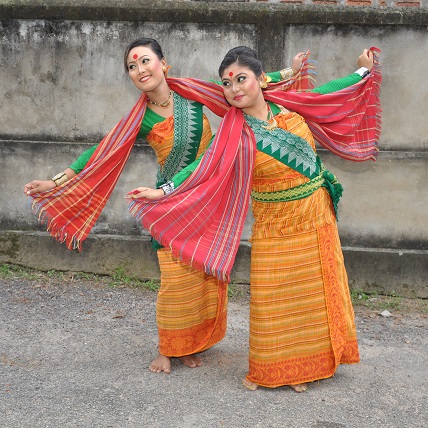
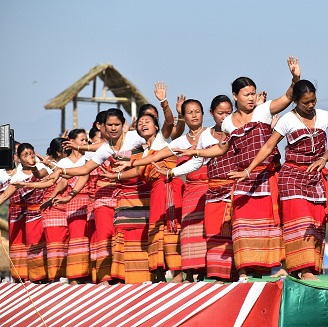
Rabha Dance
Rabha is a popular folk dance associated with the state of Assam. It’s a prominent tribe and it’s recognized as a scheduled tribe by the constitution of India. Rabha inhabit the Western districts of Assam and the Garo hill of Meghalaya. They are wet paddy culimates at the present times. But in the past they also practices Jhumur or shifting cultivation. This popular dance of the Rabha from Hamjar Fyuskar indicates this fact. In fact this is a work dance related to different stages of Jhumur cultivation. In their dance both work and werriment proceed hand in hand ‘Ha’ in Rabha weans Soil Mayat means slope in the middle of the hills. In this dance, both menfolk and womenfolk perform their assigned work at Jhumur fields.
Garo Dance
The historic Garo dance well known as “Khet Sa Sika” usually includes the young Garo lady Carring an axe going into the woods and cutting off the “khet Sa” (A native Insect). This identifies the beginning of the new year for them. To celebrate this times young Garo people participate in cultural dance and sing and exchange greeting. This celebration is called “Khet-Sa-Sika”.
The forms of dance are Ajema Roa, Mi Su·a, Chambil Moa, Do·kru Sua, Chame mikkang nia, Kambe Toa, Gaewang Roa, Napsepgrika and many others. Traditional Garo musical instruments can broadly be classified into four groups-Idiophones, Aerophone, Chordophone, Membranophone.
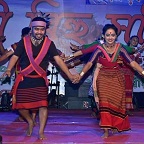
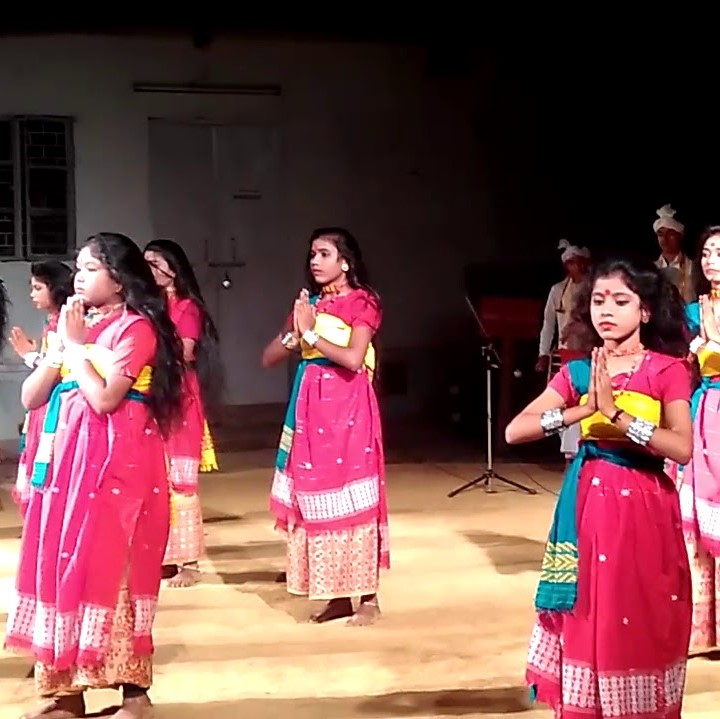
Deodhani Dance
Deodhani Dance is a folk dance from the Indian State of Assam. It is as a solo or group performance. In group performance, it essentially comprise 3 or 4 women. This dance form is associated with the worship of the snake goddess Manasa or Maroi. A Deodhani dance is generally performed to the accompaniment of songs sung by an Ojapali, an Assamese traditional chorus leader, during the dance. Ojapali are known as Shuknamni. These religious songs are sung in honour of Manasa Devi.
Deodhani depicts the dance of a woman in deep trance. The dancers keep their hair open during the performance. As per mythology, Behulaa (a character in Padma Purana) had to dance before the goddess Manasa to get back her husband’s (Lakhindar) life.
Karbi Dance
Karbi Anglong is the largest district of Assam with a total area of 10,434 sq.km. A hilly district of Assam, Karbi Anglong is a very beautiful place in the lap of nature. It is still unknown to the tourist, in spite of its enchanting natural green forests and picturesque hills.The karbis are the principal tribal community of Assam. They have multi colored cultures and traditions. The Karbis still practice their traditional religious belief system of worshipping Hemphu. Rongker, Sok-Keroi and Chomonkan are their main festival.
Here are some of the folk dances of the Karbis –Nimso kerung, Banjar kekan, chong kedam, kethir Kekan, Hacha Kekan, Rit Nong Chingdi Kekan, Lengpum Sokchon Kekan.
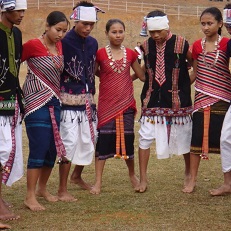
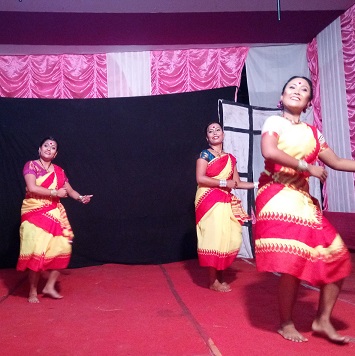
Goalparia Dance
The inhabitant of Goalpara District are of different tribes with colourful trends and traditions. Goalpara Lokgeets are the most popular folk song of Goalparia people. To perform this unique dance at least fifteen numbers of artists are needed all together. The directors of the dance is call “Gidal”. That Gidal stands with a “Bena”. The standing step of this dance circling round slowly by two step forwards and two steps backwards. While dancing they tie a red coloured handkerchief in there hands, they exposed of different postures like “Worshipping Saraswati, Pulling a Yatch, chasing chariot etc”.
Sattriya Dance
Sattriya or Sattriya Nritya, is a major Indian classical dance. It is a dance drama performance art with origins in the Krishna-centered Vaishnavism monasteries of Assam, and attribute to the 15 century Bhakti movement scholar and saint named Srimanta Sankardev.
Assam is a land known for its animated colors, rich history and a culture which is basically a hybrid of many different traditions and values. The Sattriya dance, which is a prehistoric Indian classical dance form, is amongst the 8 most renowned Indian traditional dances. The perfectly executed hand movements, bright and dramatic colored sarees, exuberant expressions and a sense of gaiety that creates a halo around this dance makes it nothing less of a visual treat for the spectators.
